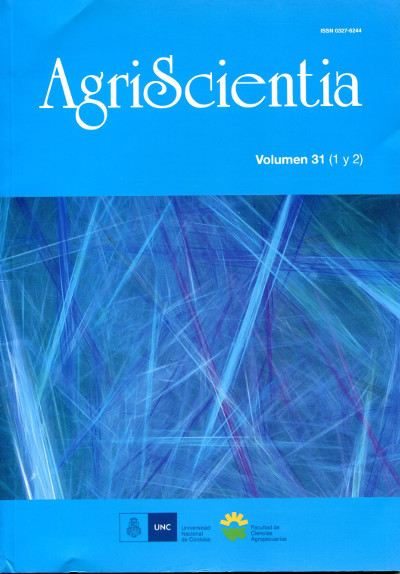Insect resistance to transgenic crops with insecticidal properties. Theory, state of the art and challenges for Argentina
Main Article Content
Abstract
Bt crops exert high selective pressure on target pests. To mitigate resistance evolution the High-Dose/Refuge strategy (HDRS) requires: a) toxin expression in plant sufficiently high to render resistance alleles recessive; b) low initial frequency of the resistance allele; c) spatial refuges of non Bt crops. Gene pyramiding, the combination of two or more toxins in a transgenic plant, is proposed to reinforce the HDRS under the assumption of toxins having different binding sites to reduce the likelihood of cross-resistance. A recent review supports the strengths of the HDRS in delaying evolution of resistance. Failure to comply one or more of the requirements of the HDRS explains the few cases of confirmed field-evolved resistance. In San Luis, Argentina, significant damage by Diatraea saccharalis was detected in some Bt maize hybrids. Hypotheses to explain these high levels of crop damage, include low level of refuge compliance, dominance of a resistance allele, and low toxin expression. The low level of refuge adoption triggers discussions about the opportunity of promoting seed mixture refuges. A case by case approach is advocated to tailor IRM strategies according to the specific knowledge about the ecology of each pest.
Downloads
Download data is not yet available.
Article Details
How to Cite
Trumper, E. (2014). Insect resistance to transgenic crops with insecticidal properties. Theory, state of the art and challenges for Argentina. AgriScientia, 31(2), 109–126. https://doi.org/10.31047/1668.298x.v31.n2.16538
Issue
Section
Review

